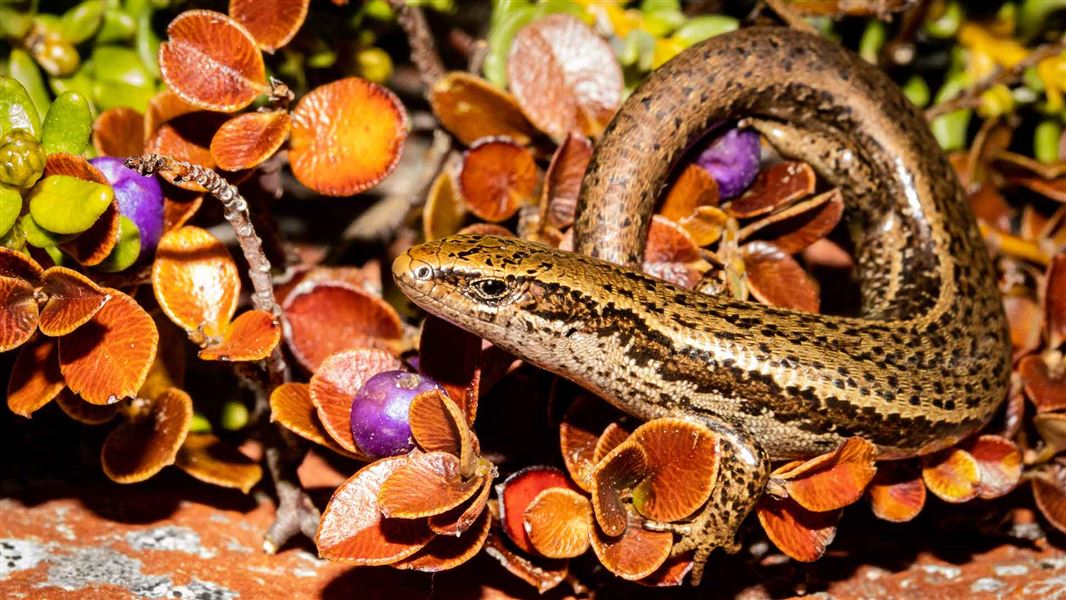Scientific name: Oligosoma aff. inconspicuum “North Otago”
New Zealand status: Endemic
Conservation status: Threatened; Nationally Vulnerable
Primary Threats: Unknown but likely mammalian predators, habitat loss and fire
Image gallery
Description
Length: Up to 70 mm from the nose to the base of the tail.
Oteake skink population: Unknown but possibly restricted to two small but discrete areas.
Food: Invertebrates, fruit, nectar.
Distribution
The distribution is still poorly understood but we are running surveys to improve our understanding. It is currently only known from two discrete locations in the alpine areas in the Oteake Conservation Park, north Otago.
Challenges
Oteake skink seem to be restricted to boulderfields, rock jumbles and creviced rock bluff habitats with overgrowing dense snow totara (Podocarpus nivalis) and other low growing woody shrubs, such as Dracophyllum.
Skinks may have persisted in these areas because their deep rocky habitat is partially resistant to fire, and historical fires would have caused widespread habitat loss in the past. The current snow totora habitat is sparse or has gone from most of this species historical distribution. They are generally found at elevation of 900–1300 m above sea level.
What we’re doing to learn more
We are focused on understanding this shy and secretive species distribution, its preferred habitats and likely threats. This information will help define where protection is best placed and the threats present at these sites. Once we have a better understanding of the species we be in a good position to monitor trends and begin management if that’s needed.
How you can help
We are very keen to learn of any sightings of lizards in the alpine zone of South Island mountains – the area above the tree and shrub zones. If you have seen a lizard in the alpine zone, we would like to hear from you. Send us:
- a photo of the lizard
- a photo of the area where you found it
- exact location information.
Send your information to: lizardresearch@doc.govt.nz
